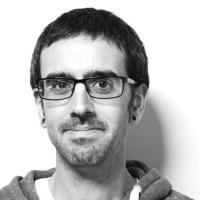BMW made headlines at CES 2020 when it announced Samsung will bring in-car 5G to the production version of the iNext, a highly-connected electric SUV due out in 2021.
Internet-connected cars are nothing new. The number of vehicles available with an in-car 4G LTE connection grows annually, and this technology has trickled down from the industry’s upper echelons to bargain-priced econoboxes.
But bringing 5G to a car isn’t as simple as embedding a chip into the dashboard and gluing a piece of trim over it. Samsung-owned Harman, an American company specializing in developing and manufacturing electronics and connected products, is applying lessons learned from decades of engineering smartphone components to let motorists access the next-generation mobile broadband as seamlessly as possible.

5G presents a unique set of challenges. Its speed is enabled by the radio spectrum it uses, but that same spectrum tends to have shorter range. A reliable connection requires more hardware, like numerous antennas to send and receive a massive amount of data. Yet no one wants to drive around in a car that looks like it has a defense-spec satellite dish bolted to its roof.
“We’re looking at more complex antenna structures. Where do you put them? It can be a logistical nightmare,” explained Roger Jollis, Harman’s director of product management, in an interview with Digital Trends.
In-car 5G systems crib notes from cell phone design
The solution is right in your pocket. When was the last time you pulled out an antenna before making a phone call? For me, it was probably in 2006, when I got rid of my Kyocera Slider.
Smartphone manufacturers eliminated external antennas from devices over a decade ago. Your iPhone has an antenna, but it’s neatly embedded beneath the casing thanks in part to innovations that allowed researchers to make it smaller while improving signal strength, even through metal or plastic.

Harman’s researchers want to see a similar phenomena permeate automotive design. The company is mounting the antennas needed to enable in-car 5G onto a single structure that can be installed beneath sheet metal, like under an SUV’s roof panel. Jollis calls this a conformal antenna, meaning it conforms to the car’s original design instead of adding an angle, or three, to it.
“We can mount as many as 14 antennas on the same block [that we put inside the car], and that really helps to manage the issues with spreading antennas throughout the vehicle,” Jollis told me.
When was the last time you pulled out an antenna before making a phone call?
This solution comes with its own set of challenges. Heat is notably a big problem. The module is normally sandwiched between the roof panel and the headliner, usually above the rear seats, so it can bake like a delicious carrot cake if the car sits in the sun all day. The heat the antenna generates needs to be dissipated, too. Harman’s car-bound 5G components are subject to far more stringent standards than the bits that end up in phones and other connected devices.
Clearing these hurdles is worth it. In-car 5G promises to make your car’s touchscreen as versatile as your phone or tablet by opening the door to in-car gaming, like the virtual reality-based software Audi has showcased, high-resolution video streaming, and a proliferation of apps. It’s reasonable to assume screen sizes will continue to increase as the car morphs into its own digital ecosystem — one automakers and tech companies can profit from, of course.
Looking beyond the fun, the obvious, and the lucrative, there are other ways 5G can justify its presence in your car. It could be used to improve the way software updates are delivered. That process is cumbersome with many modern cars, and may even require a trip to a dealer.
“You’re always getting updates on your phone, or on your laptop, and it’s no different in the car,” Jollis explained. “Sometimes, they have to do with safety, sometimes they improve security, and other times they’re just enhancements. Regardless, 5G is going to deliver that capability.”
Cellular vehicle-to-everything could be the killer app
Cellular vehicle-to-everything (CV2X) could also get a big boost from 5G. Jollis pointed to edge computing, which decentralizes data processing, as a promising use case. There’s no need to warn someone driving through Manhattan that there’s a delivery truck blocking State Street’s right lane in Salt Lake City. Yet a centralized system operates as if that were the case, beaming all data back to a central database, which then directs information to clients across the globe.
Edge computing drastically shortens the trip data has to take. Instead of hogging bandwidth by updating a map everyone in America — or the world — might access, this information is instead be beamed out only to every car within, say, a two-mile radius. The result should be faster communications and lower costs.

We’re not there yet. The first 5G systems will hit the road about halfway through 2021, Jollis predicted. BMW is one of the pioneers, but it’s not far-fetched to speculate other automakers will announce similar initiatives by the end of 2020. Every automaker will need to invest in the technology if they want to keep up with buyer demands around the world.
“The systems we’re working on today will be rolled out between 2021 and 2023, and those vehicles will be under warranty, some of them until as late as 2027. If they are not 5G-ready, vehicle users will not get the kind of service they expect,” Jollis concluded.
Editors' Recommendations
- AT&T brings 5G cellular connectivity to Ford F-150 Lightning and production line
- Harman wants you to customize how your car reacts in unexpected situations
- Volvo joins forces with China Unicom to develop 5G for its cars
- BMW and Samsung are Bringing 5G to an Electric SUV as soon as 2021
- At IFA, Qualcomm and BMW unveil the world’s first 5G connected car — almost



